Key takeaways
- Time slips are perceived as brief, vivid experiences where the past feels momentarily present, particularly in historically rich locations like London.
- Signs of a time slip often include sudden chills, sensory details, and emotional disorientation, indicating a shift in reality.
- Preparation for experiencing time slips involves openness, mental grounding, and patience to embrace unexpected moments.
- These experiences challenge our understanding of time, suggesting that it may be more fluid and layered than a linear concept.
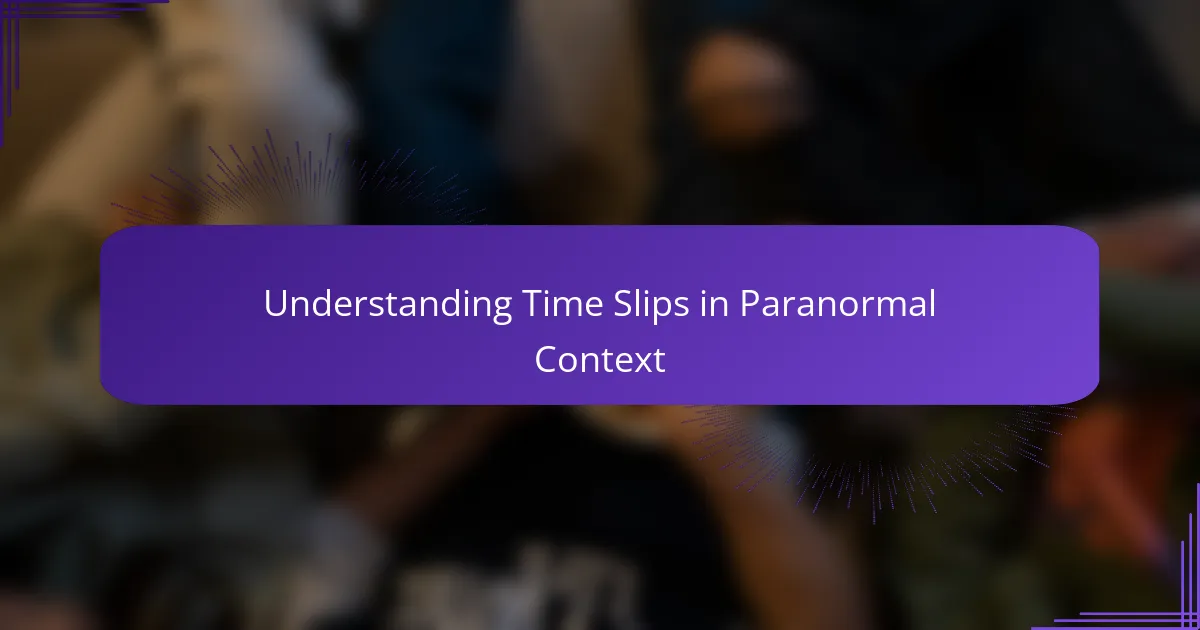
Understanding Time Slips in Paranormal Context
Time slips, in the realm of the paranormal, often feel like sudden, unexplainable shifts in reality—moments when you seem to step outside the normal flow of time. Have you ever glanced up and felt that the world around you changed just for a brief instant? That eerie sensation is what I imagine time slips to be: a glitch in how we perceive past and present.
From what I’ve gathered, these experiences aren’t just random; they seem to connect deeply with the environment, especially in places rich with history—like London. When I first heard about time slips, I wondered if they were just tricks of the mind, but hearing others’ stories made me question how little we truly understand time itself. Could it be that places with intense emotional or historical energy act as portals, briefly merging different eras?
What fascinates me most is how these moments feel intensely real—not dreams or hallucinations but vivid slices of another time layered onto our own. I find myself asking, if time slips are genuine, how many unnoticed anomalies have we passed every day? And what does that say about our limited perception of reality?
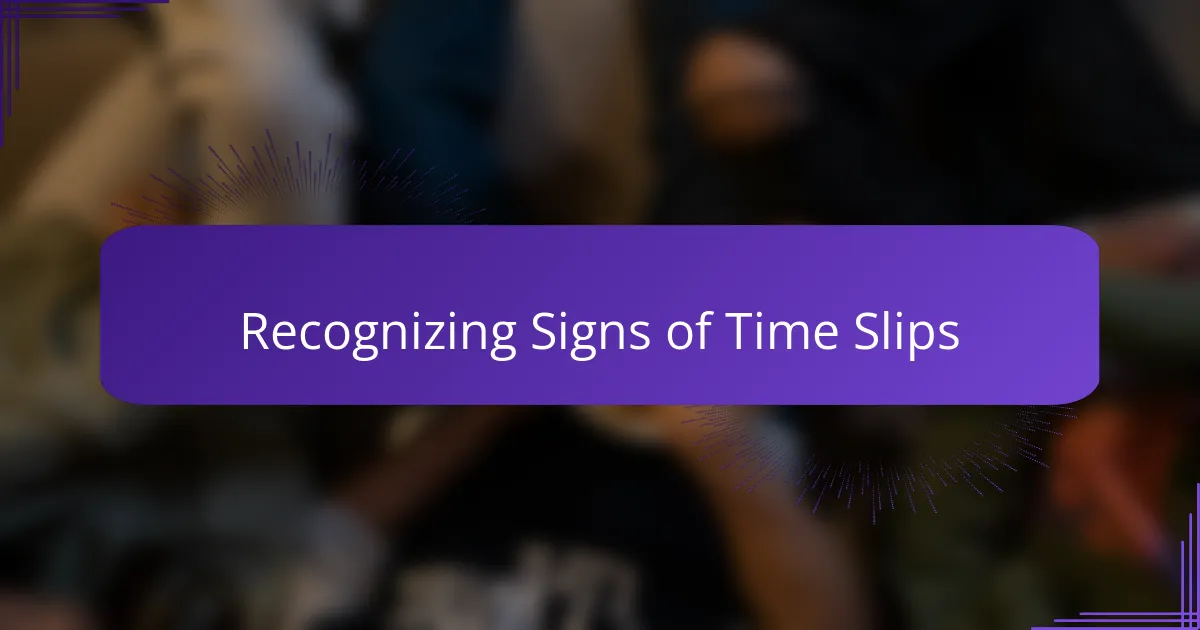
Recognizing Signs of Time Slips
Recognizing the signs of a time slip can be surprisingly subtle. For me, it often starts with a sharp, inexplicable feeling—like a sudden chill or a strange stillness in the air—that something’s off. Have you ever walked down a familiar street and suddenly felt as if you’d stepped into a different century? That’s the kind of shift I’m talking about.
Sometimes, it’s sensory details that give it away: the flicker of gas lamps where none should be, echoes of distant footsteps that don’t belong to anyone nearby, or even the fleeting glimpse of clothing styles from ages past. I remember one afternoon near an old London square when the crowds and traffic noise vanished for a moment, replaced by the quiet murmur of horse-drawn carriages—a moment so real it took my breath away.
But the real sign is how these experiences linger emotionally, leaving you unsettled and questioning what you just witnessed. Have you ever felt that sudden disorientation, as if your sense of time was momentarily untethered? That uncanny feeling, mixed with awe and confusion, is to me the clearest indication that a time slip might be unfolding right before your eyes.
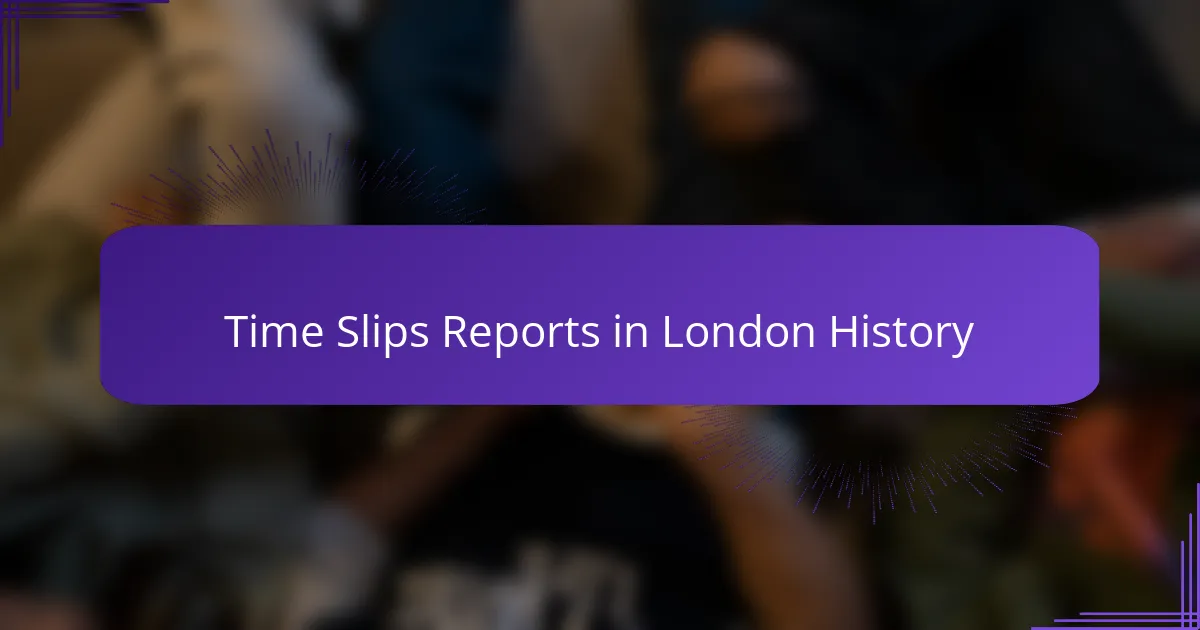
Time Slips Reports in London History
London’s history is peppered with intriguing reports of time slips that seem almost too strange to be true. One story that always stuck with me involves a traveler on Westminster Bridge who suddenly saw the area transform into a foggy scene from the early 1900s, complete with horse-drawn carriages and Victorian attire. Can you imagine standing in modern London and witnessing a living postcard from the past unfold before your eyes?
What gets me thinking is how these accounts often come from places layered with historical significance—ancient alleyways, old markets, and centuries-old buildings. I wonder, are these sites somehow imprinted with echoes of their own past, waiting for sensitive moments or people to unlock them? It feels like London’s very stones hold memories that sometimes break through to the present.
One particularly vivid case I recall describes a woman walking through Greenwich who suddenly found herself in a bustling 18th-century dockyard, surrounded by sounds and smells that vanished just as quickly as they came. That kind of experience lingers long after the moment passes, leaving you questioning not just what you saw, but how our understanding of time might be far more fluid than we think. Have you ever had a moment when the past seemed to reach out and touch you?
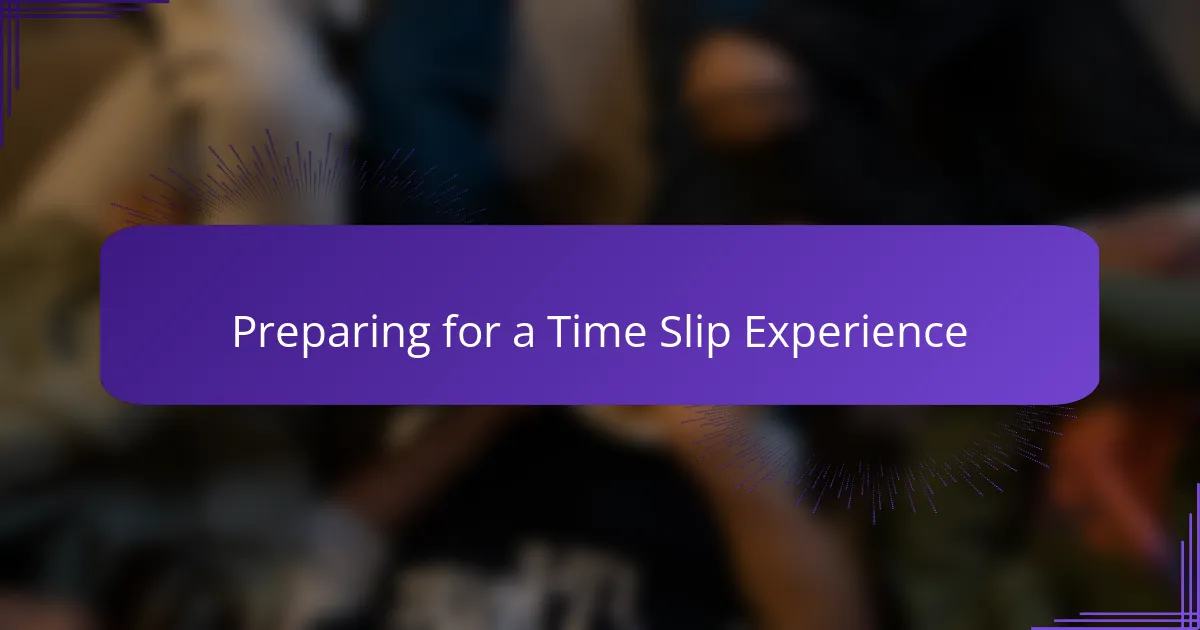
Preparing for a Time Slip Experience
Preparing for a time slip experience requires more than just curiosity—it demands a mindset open to the unexpected. When I first set out to explore potential time slip sites, I found that grounding myself mentally, by quieting distractions and tuning into the atmosphere, was crucial. Have you ever noticed how moments of stillness often precede something unusual? That calm awareness seems to invite these temporal glitches.
I also learned to trust my senses, even when they seemed unreliable. The faintest chill, a sudden shift in lighting, or a subtle change in sounds all became clues I learned to pay attention to. Once, walking near an old London churchyard, I felt an odd dissonance in the air—a blend of nostalgia and tension—that primed me for what was to come. Have you ever had a gut feeling that something just isn’t quite right? That intuitive alertness might be your best guide.
Finally, patience plays a big role. Time slips, from what I’ve experienced and heard, don’t unfold on demand but appear when you’re genuinely present and receptive. Preparing yourself mentally to embrace uncertainty, without rushing or forcing, can transform the experience from fleeting confusion into something profoundly memorable. Don’t you think the best moments in life often come when we least expect them?
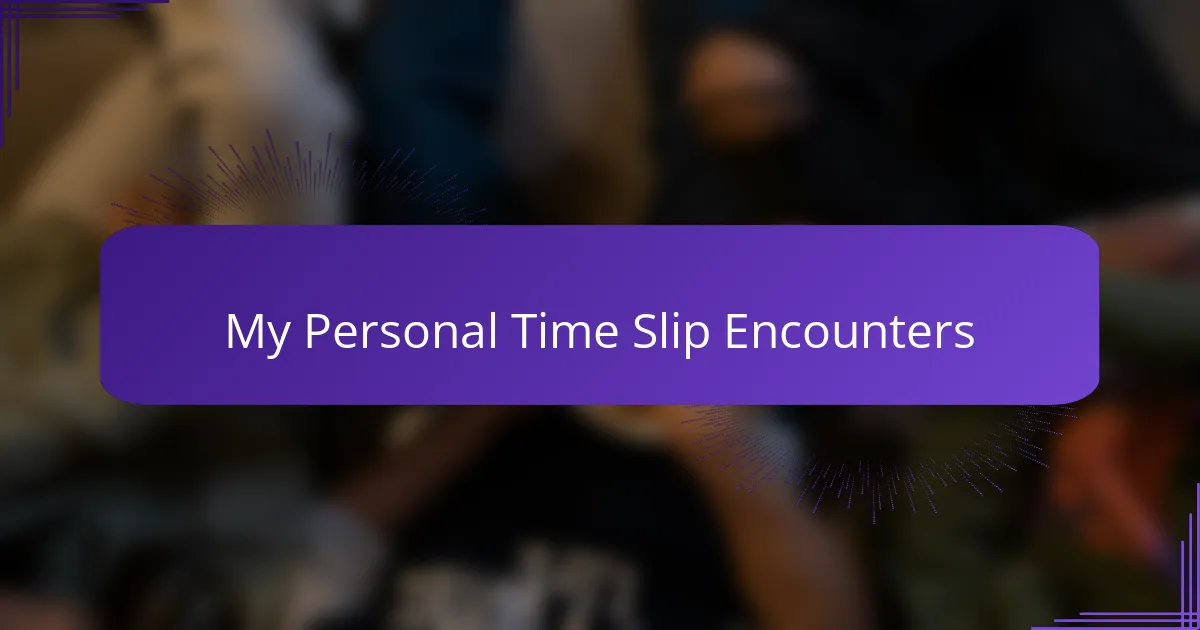
My Personal Time Slip Encounters
There was one afternoon near the old Temple area when I suddenly noticed the architecture around me shift ever so slightly—the modern cars disappeared, replaced by horse-drawn carriages and men in top hats. It was as if I had stepped backstage into Victorian London for just a moment. Have you ever felt a place change around you so quickly that you question your own senses? That moment left me breathless, unsure if I had truly slipped through time or simply imagined it.
Another time, while wandering through a dimly lit alley near Fleet Street, I felt an overwhelming stillness wash over me. The sounds of the city faded, and I caught a faint scent of coal smoke and ink—the unmistakable markers of a printing press from centuries ago. It felt more than a memory; it was like time folded in on itself, revealing a hidden layer beneath our daily reality. Have you ever experienced something so vivid that it unsettled your sense of what’s real?
On a quieter note, once I brushed past an old lamppost in the heart of London and instantly had a flash of a bustling 18th-century market square—a swirl of voices, traders shouting, and the clatter of wooden carts on cobblestones. The intensity of the scene surprised me; these weren’t vague impressions but full sensory immersions. It made me wonder: how many of these invisible doors to the past surround us daily, waiting for someone curious enough to step through?
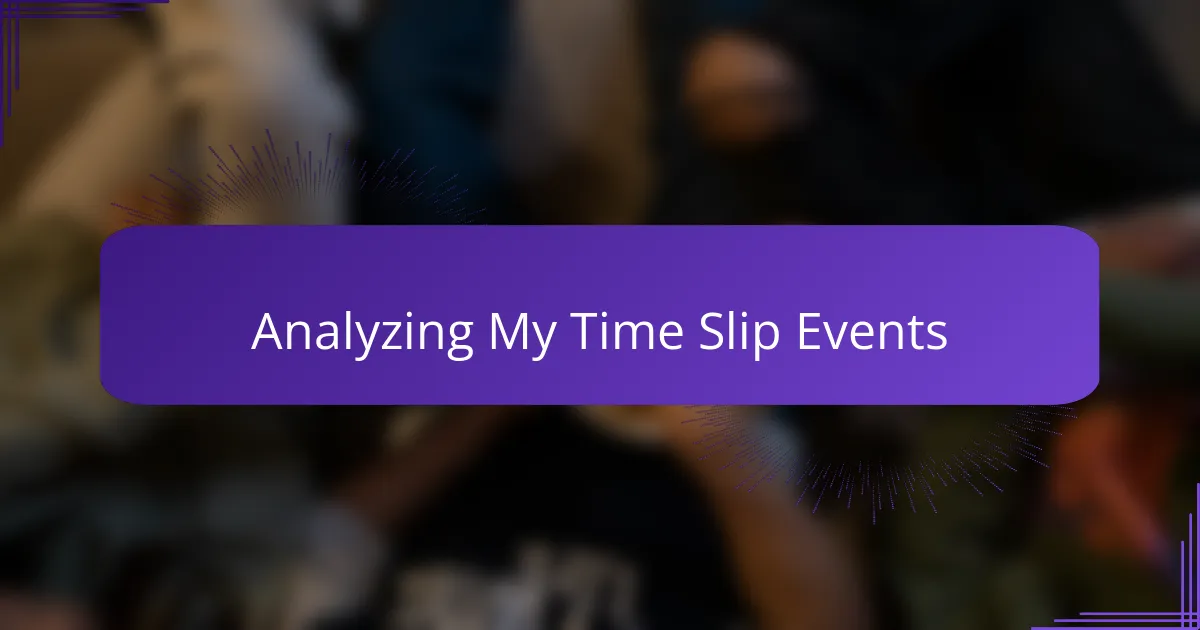
Analyzing My Time Slip Events
Looking back on these moments, I can’t help but analyze how convincingly real they felt—beyond just fleeting images, they engaged my senses completely. It’s as if time itself momentarily folded, allowing me a glimpse behind the curtain of history. Have you ever wondered what it means when these experiences hit with such clarity, leaving you shaken yet undeniably curious?
What strikes me most is how the environment seems to play an active role, almost like a catalyst for these slips. The aged buildings, cobblestone streets, and even the atmosphere seemed to ground me in a different era, making the experience feel less like a hallucination and more like a genuine glitch in time. Could it be that these locations carry some kind of temporal imprint or residual energy that surfaces in certain conditions?
In retrospect, I realize how much my own mindset influenced the events too. Being open, attentive, and emotionally receptive seemed to invite these episodes, while skepticism only created mental barriers. Isn’t it fascinating how our perception of reality might alter the very fabric of our experience? After all, if time slips are possible, maybe our consciousness plays a bigger part in them than we thought.
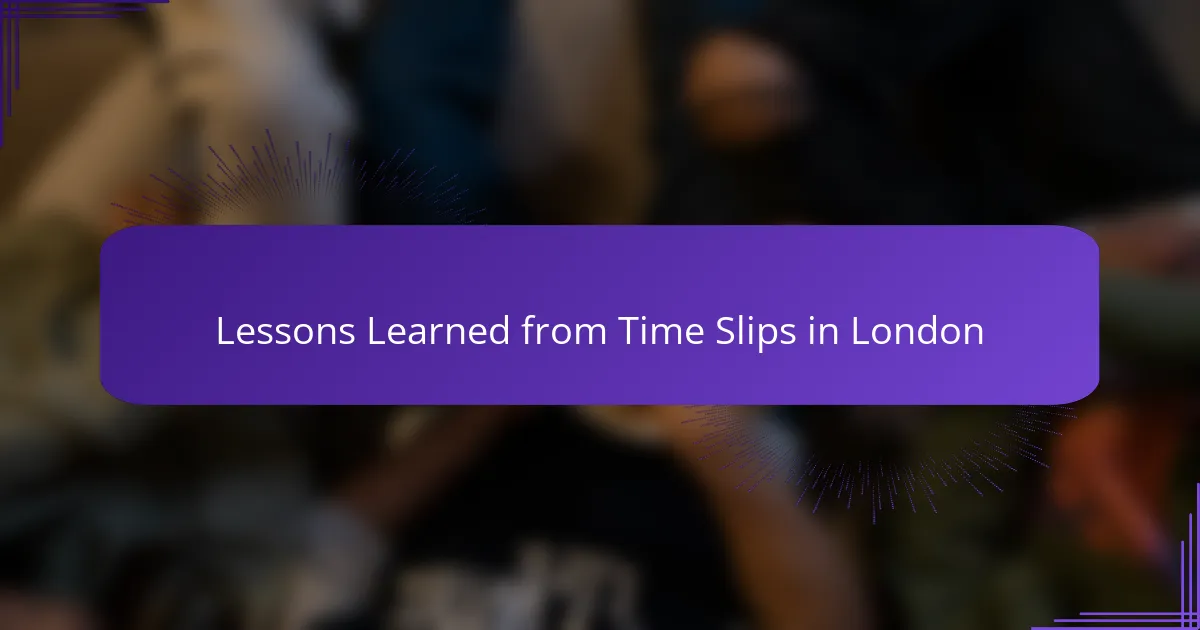
Lessons Learned from Time Slips in London
What really stands out to me from these time slip experiences in London is how they teach us to question the rigidity of time itself. I’ve come to see time not as a straight line but more like a layered tapestry, where past and present can briefly overlap. Doesn’t that idea shake up everything we thought we knew about how time works?
Another lesson I’ve learned is the importance of openness. When I first encountered these slips, I wanted concrete answers, but I soon realized that trying to force logic only blocks the experience. Have you ever noticed that moments of wonder happen when you let go of control? Embracing uncertainty feels like the key to truly seeing these strange moments.
Lastly, there’s a humbling aspect to these experiences. They remind me that history isn’t confined to books—it’s alive beneath our feet, waiting to surprise us. Walking through London’s ancient streets now feels different; I carry a sense of respect and curiosity, knowing that at any moment, the past might reach out and brush against me. Wouldn’t you agree that this awareness changes how you connect with the city around you?